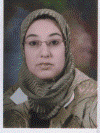Day 1 :
Keynote Forum
John F Bradfield
AAALAC International
USA
Keynote: Research animal welfare and scientific integrity: An AAALAC International perspective
Time : 10:05-10:35

Biography:
John F Bradfield is Senior Director, Association for the Assessment and Accreditation of Laboratory Animal Care (AAALAC-International). He is a veterinarian and a Diplomate of the American College of Laboratory Animal Medicine. John Bradfield also has PhD in experimental pathology with scholarly publications in various areas of laboratory animal medicine, wound healing, vascular and platelet biology. Dr. Bradfield has had many years experience with the accreditation process as an ad hoc consultant and ten years service as a Council member of AAALAC International and as Council President. He has served as Director of the Division of Laboratory Animal Medicine and Attending Veterinarian at the University of North Carolina, Chapel Hill, and also as the Chair Department of Comparative Medicine, Brody School of Medicine, East Carolina University, Greenville, North Carolina. He has extensive experience in academic laboratory animal medicine, managing animal programs and working with animal care and use committees. Prior to his career in laboratory animal medicine, Dr. Bradfield was a large animal practitioner. In his current role at AAALAC International, he is responsible for education and outreach activities.
Abstract:
The use of animals in research requires a strong ethical commitment to be good stewards of the animals in our care. This responsibility is shared by the Principal Investigator, Attending Veterinarian, Institutional Animal Care and Use Committee or Ethics Committee (IACUC) as well as the institution. AAALAC International has conducted peer review and accreditation of animal research programs for 50 years to ensure that high standards of animal welfare and scientific integrity are implemented. A review of AAALAC site visit findings data will provide insights into the challenges associated with the management of a variety of research animal care and use programs across the globe. Strategies for employing sound practices will be highlighted for such topics as IACUC function, programs of veterinary care, occupational health and safety, animal environment and management and physical plant/animal facilities.
Keynote Forum
Arnost Cepica
University of Prince Edward Island
Canada
Keynote: Development of MALDI-TOF spectrometric assessment of total IgG, as phenotypic marker of disease resistance in Aleutian disease of mink
Time : 10:35-11:05

Biography:
Arnost Cepica has worked briefly in control of human biologics (1982-85). In 1985 he was one of the founding faculties of the new Atlantic Veterinary College in Canada. He has been an active Researcher and Reviewer in the areas of diagnosis, immunity and pathogenesis of viral infections. In recent years, he has concentrated his efforts on the development of MALDI-TOF mass spectrometric quantification of IgG in unfractionated serum and plasma and its application in breeding for disease resistance to Aleutian disease, a persistent viral infection.
Abstract:
Hyper-gammaglobulinemia and ensuing decreased albumin (A): IgG ratio are hallmarks of persistent viral infections Aleutian disease of mink (AD, parvoviridae) and African swine fever (ASF, asfarviridae). Outcomes in individual hosts depend on the genetics of the host (breeds) in addition to the virus strain involved. We developed a high throughput, quantitative, reproducible and inexpensive application of MALDI-TOF mass spectrometric determination of total IgG in unfractionated blood serum and plasma through determination of the A: IgG ratio. The ratio was chosen rather than simple IgG quantification because of its individualized significance in assessment of hyper-IgG and because of its technical reproducibility. The lack of correlation between A: IgG ratios and AD virus specific Ab determined by quantitative ELISA (r=0.385; p=0.008) suggested strong autoimmune component induced by the virus in diseased animals. Since both diseased and healthy infected animals had similar rates of PCR detection of the virus in their blood, we propose that autoimmunity is the pathogenetic feature that is under the genetic control in AD. Animals with normal A/γG=/>8 were bred and compared to animals with A/γG=/<8 (hyper-IgG) raised in the same facilities. A significant increase in the birth rates and a decrease in the progeny mortality occurred after the first year of the selection and after the second selection season the productivity returned to the levels comparable to the periods before AD outbreaks. We postulate that this approach might be useful for production of ASF disease resistant swine.
Keynote Forum
Michael D Flythe
United States Department of Agriculture
USA
Keynote: Potential rumen, vascular and production benefits of isoflavones in ruminant diets
Time : 11:20-11:50

Biography:
Michael D Flythe has a PhD in Microbiology from Cornell University. He is rumen Microbiologist with the USDA-ARS Forage-Animal Production Research Unit in Lexington, Kentucky. He is also an Adjunct Faculty Member in the University of Kentucky, Department of Animal & Food Sciences and an Associate Member of the Graduate Faculty. He has published more than 70 articles, chapters and proceedings and serves on the Editorial Boards of journals.
Abstract:
Legumes such as clovers are well known for their role in the nitrogen cycle and as high protein components in ruminant diets. The production of flavonoid secondary metabolites particularly isoflavones is another distinguishing feature of legumes. Isoflavones are phytoestrogens which can interfere with reproduction in grazing ruminants. However, our research group has identified potential benefits of isoflavones including positive effects on rumen function and relaxation of the vasculature. Extracts of red clover (Trifolium pratense) extracts decreased amino acid degradation by rumen bacteria. The active component in the clover extract was an isoflavone, biochanin A which potentiated the activity of endogenous rumen antimicrobials (bacteriocins). Ionophores (e.g., monensin) decrease rumen ammonia and increase feed efficiency by inhibiting the same group of bacteria. Thus, isoflavones are potential phytochemical alternatives to traditional ionophores. Biochanin A and other isoflavones are known to stimulate nitric oxide synthase in the circulatory system which led us to the hypothesis that clover extract would act as a vasodilator in ruminants. Vasodilation or vasorelaxation would be beneficial because many ruminants are exposed to ergot alkaloids that cause chronic vasoconstriction (i.e., fescue toxicosis). When goats received ergot alkaloid-rich fescue seed, vasoconstriction was observed in the carotid and recurrent interosseous arteries. Administration of clover extract decreased vasoconstriction. Beyond ergotism, we hypothesize that isoflavone-induced vasodilation could impart some of the same production benefits as β2-adrenergic receptor agonists (e.g., ractopamine). Together these results indicate that some of the production benefits of non-therapeutic drugs could be realized through properly managed legume-derived isoflavones or simply legumes.
Keynote Forum
Fred Williams III
University of Missouri
USA
Keynote: Improving diagnostic pathology results: Help us to help you come to a more definitive diagnosis
Time : 11:35-12:00

Biography:
Fred Williams III completed his undergraduate education at Tuskegee University and continued in the veterinary school there at Tuskegee to become a member of the class of 2001. He started a residency at the University of Missouri in 2002 and continued following the completion of his residency as a faculty instructor. Currently, he is at the University of Missouri as an Associate Professor in Pathobiology with a primary focus on clinical education of professional students and diagnostic work for the Veterinary Medical Diagnostic Lab at the University of Missouri. He has special interests in pathogenesis and exotic animal diseases.
Abstract:
Diagnosticians strive to come up with the best possible diagnoses from submitted specimens; unfortunately, there is occasionally disconnect between the samples received and the potential etiologies that we are trying to rule out. I will provide some quick pointers on the topic necropsy for ambulatory veterinarians, fetal necropsy, and in-clinic necropsy protocols in order to provide some background on what happens to your sample after submission. I will provide tips and tricks to avoid some of the more common errors in sample submission, and discuss some ways to improve yield and efficiency.
- Special Session
Session Introduction
Glen E Aiken
USDA-ARS Forage Animal Production Research Unit
USA
Title: Risk of exposure of grazing animals to toxic alkaloids produced by fungal endophytes
Time : 11:50-13:00

Biography:
Glen E Aiken completed his PhD in Agronomy from the University of Florida in 1989. He completed postdoctoral studies at Auburn University and Texas A&M University, and has worked as a Research Animal Scientist/Agronomist for USDA-ARS since 1992. He has served as the Research Leader for the Forage Animal Production Unit in Lexington, KY since 2013. He is a Fellow in the American Society of Agronomy and the Crop Science Society of America and has 94 papers in reputable journals and 111 book chapters, popular press aricles, and book chapters.
Abstract:
There are Epichloe and Balansia species of fungal endophytes that can infect various forage grasses and grow in the intracellular spaces of the grasses. Endophytes seasonally produce large concentrations of ergopeptine alkaloids, which cause a toxicosis in grazing livestock. Certain endophytes also produce indole diterpenoids that cause the staggers condition in livestock. Ergovaline is typically the ergopeptine in highest concentration and also is the most toxic. Claviceps fungi can infect inflorescence of cereal grains and certain forage grass species, and produce ergopeptines, most notably ergotamine, that cause the toxicosis, but certain species can also produce tremorgen compounds (Claviceps paspali). Signs of the toxicosis include reduced conception rates, retention of rough hair coats, depressed prolactin concentrations, elevated core body temperatures, and reduced DM intakes and weight gains. Signs of consumption of tremorgen compounds is excitability, persistent shaking, and incoordination. Animals are sensitive to these toxic alkaloids, with morbidities often above 80%; however, mortality is typically below 5 percent. The cost in animal production can be quite high, but management approaches can be taken to mitigate the adverse effects on animal physiology and well-being. There will be a discussion on the altered physiology of grazing animals inflicted with either the toxicosis or staggers and management approaches to mitigate or alleviate the toxicosis.
- Workshop
Session Introduction
Fred Williams III
University of Missouri
USA
Title: Diagnostic approach to abortion in domestic species
Time : 13:50-14:40

Biography:
Fred Williams III completed his undergraduate education at Tuskegee University and continued in the veterinary school there at Tuskegee to become a member of the class of 2001. He started a residency at the University of Missouri in 2002 and continued following the completion of his residency as a faculty instructor. Currently, he is at the University of Missouri as an Associate Professor in Pathobiology with a primary focus on clinical education of professional students and diagnostic work for the Veterinary Medical Diagnostic Lab at the University of Missouri. He has special interests in pathogenesis and exotic animal diseases.
Abstract:
Abortion losses can be a major loss for domestic animal producers. In some cases, nearly a year of preparation and great expense may be lost in an abortion. There are a number of infectious, toxicologic, and non-infectious causes for termination of or unsuccessful reproductive outcome of gestation. We will explore some of the common infectious causes based on species and typical diagnostic approaches used to identify a specific etiology. With potential emphasis on the discussion of zoonotic potential of several pathogens. Typical necropsy procedures particular to the fetal necropsy will be discussed. Additionally, typical complications to the identification of a potential etiology for abortion/stillbirth will be discussed.
- Track 1: Veterinary Science
Track 2: Animal Nutrition and Diseases
Track 10: Animal Models and Testing

Chair
Glen E Aiken
USDA-ARS Forage Animal Production Research Unit, USA

Co-Chair
Michael D Flythe
United States Department of Agriculture, USA
Session Introduction
Swanand R Sathe
Iowa State University
USA
Title: Laparoscopic artificial insemination techniques in small ruminants

Biography:
Swanand R Sathe is a board certified Theriogenologist who finished his residency training at the University of Illinois at Urbana-Champaign (UIUC) in 2011. He is a graduate of the Bombay Veterinary College (India) and holds Master’s degrees in Veterinary Internal Medicine (India) and Reproductive Biology (UIUC). He is currently an Assisstant Professor and section Head of Theriogenology at the Iowa State University College of Veterinary Medicine. His main areas of interest include embryo transfer techniques in a variety of species including small ruminants, equine and cervids. He has authored several chapters in major textbooks on theriogenology and published several articles.
Abstract:
Artificial insemination is a tried and tested method of improving flock genetics and is routinely carried out in several species worldwide. Small ruminants (sheep and goats) too have been artificially inseminated for several decades with varying success rates due to the elements of seasonality and anatomic pecularities of their reproductive tract. One such pecularity that has prevented producers from achieving higher pregnancy rates with traditional AI techniques is the presence of cervical rings. This is especially true in sheep where passing a insemiation rod and pipette is nearly impossible without causing trauma. Laparoscopic artificial insemination technique offers a newer way of circumventing the traditional route of AI and has the advantage of direct visual depostion of semen inside the reproductive tract. This method has shown to be superior in achieving higher pregnancy rates and efficiently using semen by reducing the the total numbers of spermatozoa deposited. Sheep, goats and wild cervids can be synchronized using various protocols and be bred on timed AI during and outside the traditional breeding season using laparoscopic methods. This has led to producers achieving two crops of offspring per year or lambing /kidding duirng a particular time of the year to meet market demands. In this talk we will focus on the current methods of synchronization of estrus as well as laparoscopic AI techniques that are currently utilized in small ruminant reproduction.
Omar El-Tookhy
Cairo University
Egypt
Title: Clinical and ultrasonographic findings of some ocular conditions in sheep goats and camels
Time : 14:40-15:05

Biography:
Omar El-Tookhy has travelled for predoctoral scholarship and visits to Germany and Switzerland, postdoctoral study and work in Canada and has spent 3 years at Qassim University, KSA as vet-surgery professor. Currently he is working as a full professor at Cairo University, school of veterinary medicine, Egypt. He has published more than 21 papers in reputed journals and serving as a reviewer for some international journals in his field.
Abstract:
Ocular diseases in food-producing animals play a signiï¬cant role in economic losses. Individual ophthalmic examinations are not frequently performed as part of a herd health program but are very important to ensure the herd health. Sheep and goats are highly exposed to outbreaks of infectious keratoconjunctivitis and other conditions causing corneal opacity. Early cases (70%) showed varying ocular conditions of anterior uveitis (46%) with other manifestations on the corneal and in the anterior chamber. Ultrasonographically, the pupil appeared constricted with increased hyperechoic thickening of the ciliary body. In chronic cases, corneal pigmentation (10%) and cataract (20%) were seen. Among camels, trauma-related problems were the most common eye problems. This included keratitis with/without the involvement of iris and ciliary body in the form of iridocyclitis (31%) and penetrating corneal wounds (23%). Lesser observations involving cataract (16%) and glaucoma (2%) were recorded. Posterior segment affections constituted (27.5%) and included intraocular tumour (2%), retinal detachment (6%) and blindness (20%). Ocular ultrasonography enables the visualization of inner ocular structures especially when corneal opacity prevents visualization of retrobulbar region. From the owner’s perspective, ultrasound provides a more precise tool for investigating the eyes and is influential in making decisions regarding the treatment of their animals. From the practitioners’ point of view, detection of ocular abnormalities using ultrasound prior to any interference helps in planning the possible way(s) of management and treatment. It also provides a better prognosis of the expected outcomes.
T K Gahlot
Rajasthan University of Veterinary and Animal Sciences
India
Title: Important surgical disorders of dromedary camels and their management
Time : 15:05-15:30

Biography:
T K Gahlot has completed his PhD at the age of 34 years from Haryana Agricultural University. He is the Director of Clinic, Rajasthan University of Veterinary and Animal Sciences, Bikaner, India and Professor and Head of Department of Veterinary Surgery and Radiology, College of Veterinary and Animal Sciences, Bikaner. He is Editor in Chief of Journal of Camel Practice and Research since 1994. He has published more than 150 papers in reputed journals and edited five books on camelids. He is Principal Investigator of Centre for Disaster Management Technologies in Animals at Veterinary University, Bikaner.
Abstract:
Surgical affections of camels lead to production losses. An overview reveals that camel surgery has two distinct divisions i.e., soft tissue surgery and orthopedic surgery. Majority of soft tissue surgery involved gastrointestinal tract and urogenital system. Surgical affections do occur at skin and adnexa. The current concept of surgery of camels is based on its surgical anatomy and accordingly deep intraoral surgery is performed to resect the injured soft palate of camel. Creation of drainage openings and counter openings in cases of saddle gall abscesses or contusions and sheath hematomas or abscesses require good scalpel skills. Herniorrhaphies or hernioplasties and urethrotomy or urethrostomy also need special surgical skills keeping in view the surgical anatomy of these anatomical parts. Rumenotomy or surgical opening of compartment 1 is done to remove foreign bodies through a small flank region in a camel secured in sternal recumbency. Cosmetic surgery to repair the torn nostrils due to abnormal pulling of nose pegs with halters and salvage surgery in cases of gangrenous tail marks the surgery of camel which is different from other species. Orthopedic surgery is usually restricted to repair the mandibular and long bone fractures specially cannon bones. A wide range of techniques involving interdental wiring, transfixation, bone plating and intramedullary pinning are done with varying success. The urogenital system surgeries involve those for cystorrhexis, obstructive urolithiasis, phimosis, paraphimosis and prepucial paralysis.
Cleber J R Alho
Anhanguera-Uniderp University
Brazil
Title: Wildlife of the Pantanal wetland and the effects of zoonosis due to interactions with domestic animals and cattle rising

Biography:
Cleber J R Alho is a retired Professor-Ecology Department: University of BrasÃlia (1965-1990); he was a Senior Program Officer for Brazil-WWF-World Wildlife Fund (1990-1995) and presently a Professor of Environmental Sciences-Anhanguera-Uniderp University (2002-present). He obtained his PhD in Ecology from the University of North Carolina at Chapel Hill, USA, (1977), Masters Degree in Helminthology from Instituto Oswaldo Cruz, Brazil (1965) and Postdoctoral degree from Smithsonian Institution, Washington-DC (Natural History Museum, 1989). Scientific publications in international journals and books initially on Parasitology and later on Ecology: Conservation biology, wildlife management including biodiversity of the Pantanal. He is the Director of Funatura dedicated to conservation.
Abstract:
The Pantanal is a large continental wetland in the center of South America mainly in Brazil, an important freshwater ecosystem. Heterogeneous habitats support a diverse and abundant biodiversity. Environmental threats include deforestation due to cattle ranching and introduction of exotic species. Land use with environmental pressures on natural areas exhibit strong implications for the health and well-being. Human clusters in disorganized settlements are harmful to regional biota favoring the proliferation of disease vectors of malaria, yellow fever, dengue fever, arboviral infections, filariasis and schistosomiasis. Leishmaniasis is associated with people who invade natural areas. Wild rodents, marsupials and domestic dogs are reservoirs of pathogens. Environmental change with insect attacks is illustrated by the outbreak of stable-fly (Stomoxys calcitrans) that occurs in cattle farms close to sugar-related activities. Rabies is a zoonotic disease caused by viruses which involves the interaction of man and domestic animals such as dogs, cats, cattle and swine herds with hematophagous bats. Outbreak of tick fever is caused by Rickettsia transmitted by Amblyomma, ectoparasites of capybaras. Trypanosoma evansi causes an important horse disease affecting cattle ranching activities. Alien species include: African grass Brachiaria spp., feral hog Sus scrofa, golden mussel Limnoperna fortunei, the fish Cichla ocellaris. Added to the defense of the values of biodiversity for ecosystem services that benefit human well being and health and the proven value of this huge collection of genetic diversity of the Pantanal wetland that has provided relevant services to the production of veterinarian research are the ethical and aesthetic values of biodiversity.
Xia Dong
Shanghai Academy of Agricultural Sciences
China
Title: The effects of potassium diformate on the early stage of weaning piglets
Time : 15:30-15:55

Biography:
Xia Dong had completed her PhD at the age of 36 years from Nanjing Agricultural University, China. She was a teaching staff at Nanjing Agricultural University from 1992-2006. In 1997-1998, she attended one year training course at Larenstein International Agricultural College of Deventer, the Netherlands. She had twice working experience at the Department of Functional Genomics & Bioregulation at Institute of Farm Animal Genetics Mariensee, Germany. She is a Senior Researcher in Animal Environment & Welfare at the Institute of Animal Husbandry & Veterinary Sciences, Shanghai Academy of Agricultural Sciences.
Abstract:
In practical, the loose of weaning piglets such as diarrhea, growth retardation usually happen in the first two weeks after weaning. Potassium diformate (KDF), an acidifier works as a potential non-antibiotic growth promoter has been shown to improve the performance in piglets growing- finishing pigs and sows. But it is not yet known whether KDF influence the gastrointestinal bacterial flora in the first two weeks after weaning. Therefore, a total of 180 piglets weaned at 28 days of age were allocated randomly into two groups, with 6 replicates in each group and 15 piglets in each replicate. Piglets in the control group were fed the basal diet, whereas the KDF-treated group was fed basal diet supplemented with 10 g/kg KDF. After 2 weeks feeding, KDF improved the growth performance, the apparent digestibility of nutrients and decreased the diarrhea index and frequency. Furthermore, KDF increased the relative copies of Lactobacili in the digesta of stomach and ileum, but did not change the relative copies of Lactobbacili in the jujunum, caecum and rectum digesta. KDF did not change the relative counts of Enterobacteria in the stomach digesta but decreased it in the jujunum, caecum and rectum digesta. However, the Shannon index and band number of DGGE profiles did not show difference between the control and the KDF-treatment. Altogether, our data suggests that the influence of KDF-treatment on the relative counts of Enterobacteria and Lactobacili in the gastrointestinal gut may contribute to the improvement of growth performance and health in weaning piglets.
Mohammed El Amine Benarbia
Nor-Feed Sud
France
Title: Reducing protein and energy rates in diet while maintaining broiler zootechnical performances: Case study of Nor-Spice AB® supplemented diet
Time : 15:55-16:20

Biography:
Amine Benarbia is a Doctor of Veterinary Medicine. He has completed his PhD in 2012 from Angers’s University and Postdoctoral studies from Inserm, a well-known organism in the biotechnology and medical research. He is a R&D Manager at NOR-FEED SUD, a premier French society developing vegetal based feed additives.
Abstract:
Broiler productivity has been enhanced by the considerable genetic improvement achieved in the last decades. However, the expression of broiler genetic potential is conditioned to an optimal nutrition and usage of antibiotics as growth promoter; Providing a well-balanced diet in term of Digestible Amino Acid (DAA) and energy while reducing the feed cost and maintaining zootechnical performances is a real challenge. Furthermore broiler producer in order to meet sustainable agriculture standards have to go through optimizing the use of resources in feed formulation and reducing the antibiotic use. Nor-Spice AB® (NSAB) is a citrus concentrate containing a set of well characterized phytochemical compounds with a documented prebiotic like effect and control of pathogenic bacteria. Monogastrics fed with NSAB supplemented feed displayed better growth performances. This trial was conducted in the Bangkok Animal Research Center aimed to investigate the effect of NSAB supplementation in a “low-cost” diet (-5% DAA, -7% energy) and to answer the question whereas it’s possible to reduce DAA and energy and still achieve zootechnical performances by supplementing diet with NSAB. 288 male broilers were allocated to 4 diets: Optimal diet and low cost diet with or without 250 ppm NSAB Supplementation. Zootechnical parameters were measured daily. Animals fed with NSAB supplemented feed showed 1.1% higher feed intake, an improved FCR (-0.019) and livability (+5%). Effect of NSAB supplementation was more evident in the case of “low-cost” diet. Indeed, Animals fed “low-cost” diet supplemented with 250 ppm NSAB reached similar final body weight as animal fed optimal diet without supplementation. These results suggest that plant based feed additive can be a solution for a more sustainable broiler production by optimizing the use of resources in broiler feed formulation without losing zootechnical performances.
Eman Ezz El Sharkawy
Assiut University
Egypt
Title: Chronic exposure to hexaconazole fungicide induced neoplastic changes in hepatocytes in male rats

Biography:
Eman Ezz El-Sharkawy has completed her PhD at the age of 31 years from Assiut University, Egypt and postdoctoral studies from Assiut University, Veterinary school of Medicine. Recently, she is the professor of forensic medicine and toxicology, faculty of veterinary medicine, a premier in toxicological studies of many environmental pollutants in the surrounding environment. She has published several papers in reputed journals.
Abstract:
Long-term hepatotoxic effect of commercial Hexaconazole, one of triazole fungicides was studied on male albino rats. Two groups of rats exposed to 75 or 150 mg/kg bw, Hexaconazole orally using stomach tube respectively for 12 months. Absolute and relative liver weights were recorded. Total protein, albumin and globulin levels were determined. Serum gamma glutamyle transferase (γ-GT), alkaline phosphatase (ALP), aspartate transferase (AST) and bilirubin concentrations were also recorded. Histopathological lesions in livers of exposed rats were described. Liver sections were submitted to immunohistochemical staining using glutathion-S-transferase placental form (GST-P) tumor marker for detection of carcinogenicity. A pronounced toxic effect was observed on liver where absolute and relative liver weight was significantly increased. A significant reduction was in total protein and albumin. A significant increase in the enzyme activities and bilirubin concentrations in exposed groups was recorded. Liver histopathology exhibited various abnormalities as hepatocellular swelling, hyperplasia of bile duct and hepatocytes hypertrophy with increase in microcytic degeneration. The most interesting finding was the presence of preneoplastic nodules which appeared by light microscope and confirmed with immunohistochemistry assessment. These results suggested that hexaconazole fungicide has hepatotoxic effect and tumor promoting activity on liver tissue when administered for 12 months.
Abd El Aziz Mousa Nour
Alexandria University
Egypt
Title: Some factors affecting condition factor of lake whitefish Coregonus clupeaformis in lakes Michigan and Huron, USA

Biography:
Abd El Aziz Mousa Nour is Professor Emeritus of Animal and Fish Nutrition, Alexandria University, Egypt. He was the Head of the Department of Animal and Fish Production Alexandria University, Egypt. He did his Postdoctoral Fellowship from National Institute for Research, UK.
Abstract:
Lake Whitefish (Coregonus clupeaformis; LWF) constitutes one of the most commercially harvested fisheries in the Laurentian Great Lakes. As a benthivore, LWF plays an important role in the Great Lakes food webs due to its remarkable ability to transfer energy from lower to higher trophic levels. This study was aimed to investigate the effect of seasonal fluctuated infection parameters of LWF collected from four sites in northern lakes Huron (Cheboygan and De Tour Village) and Michigan (Big Bay de Noc and Naubinway) from fall 2003 through summer 2006. A total of 1284 spawning LWF specimens were examined in order to evaluate whether prevalence, abundance and intensity of infection affected the LWF condition factor (K) after accounting for the effect of lake, sampling site, year and season on LWF growth and condition by calculating the residuals from the Generalized estimating equations (GEEs) and then using simple linear regression to relate the residuals to K. The results revealed a positive relationship between K and GEE residuals for parasitic infection abundance (Slope=26.46, SE=9.42) and intensity (Slope=47.17, SE=24.04) suggesting that individuals with greater than average parasitic infection abundance and intensity had larger condition factors than individuals with lower than average abundance and intensity. The test for whether the model coefficient was different from zero was statistically significant for parasitic infection abundance (t=2.81, P=0.005) but was statistically insignificant, although only marginally so, for parasitic infection intensity (t=1.96, P=0.051). It is important to note, however, that the total amount of variability explained in the parasitic infection GEE residuals by K was low (R2<0.02) for both models.
De Bastiani Grasiela
Universidade Federal de Santa Maria
Brazil
Title: Association of ultrasound and anatomopathological findings of equine metacarpophalangeal lesions
Time : 16:35-17:00

Biography:
De Bastiani Grasiela has completed her M.Sc at the age of 29 years from Universidade Federal de Santa Maria and in the moment postdoctoral studies from Universidade Federal de Santa Maria. She is specialized diagnostic images of the horses and professor of anatomy. She was assistant of CIRALE-Hippolia, Goustranville (France)with reputed professor Denoix Jean Marie.
Abstract:
To determine the association between ultrasonographic and anatomopathological findings, an ultrasonographic examination was performed post mortem on the fetlock and associated structures of 37 equine forelimb specimens. All of these specimens exhibited images suggestive of lesions on the ultrasound examination. Subsequently, these limbs were dissected and underwent an anatomopathological study. Ultrasonographic changes in size, shape, architecture and echogenicity of ligaments, tendons, joint capsule, articular cartilage and bony surfaces of the metacarpophalangeal joint were associated with the anatomopathological findings.
Schafer Salvadori Andressa
Universidade Federal de Santa Maria
Brazil
Title: Immune response of lambs experimentally infected with Haemonchus contortus and parenterally treated with a combination of zinc and copper

Biography:
Schafer Salvadori Andressa has completed her MSc at the age of 30 years from Universidade Federal de Santa Maria and in the moment Postdoctoral studies from Universidade Federal de Santa Maria. She has specialized in clinical pathology with emphasis on parasitology and worked at the Federal University of Parana for two years as a Research Associate in the laboratory of parasitic diseases.
Abstract:
The present study evaluated the immune response of lambs (21) experimentally infected with Haemonchus contortus and treated with Zn and Cu. Lambs were divided into three groups: Control group, infected group-infection performed with 15,000 larvae of H. contortus/animal and group infected and treated subcutaneously with 1.5 mg/kg of Zn and 0.45 mg/kg of Cu on days 10 and 45 post-infection [PI]. Blood samples were drawn on days 0, 14, 28, 42, 56 and 70 PI in order to determine the serum concentrations of IL1, IL4 and IL6, INFγ, TNF-α and IgA, IgE, IgG and IgM. At the end of the experiment, animals were euthanatized and the parasite load was quantified. In addition, the concentrations of Zn and Cu in liver were assessed. Between days 14 and 42 there was a significant increase (P<0.001) of cytokine and immunoglobulin levels in IG and ITG when compared with the animals of CG. After day 56, the IG animals showed serum level of interleukins and immunoglobulins lower than ITG animals (P<0.001). Regarding the liver concentrations of Zn and Cu the infection showed to lead to a depletion of these minerals; therefore, the supplementation did not prevent this effect. The results of this study indicate that the administration of Zn and Cu was capable of enhancing the immune response in lambs experimentally infected with H. contortus. However, it did not reduce egg counts in the feces or the number of adult parasites in the abomasum.
Hakimullah Hakim
Tokyo university of Agriculture and Technology
Japan
Title: Evaluation of SAHW for its bactericidal efficacy on E.coli and Salmonella, present on the glass plates and rayon sheets via in vitro experiments
Time : 17:00-17:25

Biography:
Hakimullah Hakim is currently a PhD student at the united graduate school veterinary science, GIFU University, Japan.
Abstract:
Presence of bioaerosol in the poultry farms might play as a potential risk for the outbreaks of some infectious diseases. Here we evaluated slightly acidic hypochlorous water (SAHW) (Hi-Clo Soft Acidic Water: OSG corporation, Osaka, Japan), for its ability to inactivate bacteria. SAHW (containing 50, 100 ppm chlorine, pH 6), was mixed with Escherichia coli or Salmonella Infantis in a reaction-tube, and its activity was stopped by adding fetal bovine serum (FBS), after a short time of exposure. SAHW efficacy was also evaluated after spraying by nebulizer on the both mentioned bacteria inoculated on the Rayon sheets or glass plates, inside a plastic box. After some moment of exposure, samples removed and placed inside a stomacher bags containing 10% FBS in phosphate buffered saline to stop SAHW’s efficacy. The remained bacteria were titrated on DHL agar to calculate their colony forming units (CFU)/ml. In the reaction tube, SAHW (50 and 100 ppm) could inactivate both bacteria within 5 sec of contacts up to the undetectable level (≤ 2.6 log 10 CFU/ml), but in the spraying form only SAHW 100 ppm was able to reduce titer of both bacteria within 7 min spray and 5 min contact times on the Rayon sheets, and 5 min spray and 5 min contact times on the glass plates up to lower than the detectable level. Our finding confirms SAHW has ability to inactivate both bacteria which are normally present at farms and acts as a powerful disinfectant.
Khatima Ait Oudhia
High National Veterinary School
Algeria
Title: Epidemiological survey for Toxoplasma gondii, Chlamydia psittaci var. ovis, Coxiella burnetii, and Brucella spp., among sheep from north Algeria

Biography:
Khatima Ait Oudhia has completed her PhD from High National Veterinary School in Algiers, Algeria and Post-doctoral studies from University of Medicine of Montpellier, France. She has published more than 10 papers in reputed journals and has been serving as an Editorial Board Member of repute.
Abstract:
A serological survey was carried out in the northern part of Algeria (Algiers, Tizi-Ouzou, Boumerdes and Bouira), for the presence of antibodies against Toxoplasma gondii, Chlamydia psittaci var. ovis, Coxiella burnetii, and Brucella spp. Out of 585 samples tested by, highest overall prevalence (36.2%) was found for Brucella spp. The 28.6% and 12.59% of tested sheep were positive for T. gondii and C. psittaci var. ovis respectively. A total of 12.2% were found to be seropositive for C. burnetii. Levels of these infections were found in all four prefectures. The demonstration of circulation of some bacterial and parasitic zoonotic agents in sheep flocks in the northern prefectures of Algeria, based on serological analysis, advanced the knowledge on pathogens affecting domestic sheep in Algeria. Considering the zoonotic potential of these pathogens, further studies are needed.
Shrikant B Katole
Anand Agricultural University
India
Title: Effect of moderate work on intake and serum profile of minerals in semi-captive Asian elephants (Elephas maximus) fed sugarcane based diet

Biography:
Shrikant B Katole has completed his PhD (2011) in Animal Nutrition from Premier Veterinary Research Institute IVRI, Izatnagar. He has been awarded ICAR’s prestigious JRF for his Master degree. He has published more than 25 research papers in journals of national and international repute and presented more than 30 research papers in various conferences/symposia and has been serving as an Editorial Board Member of reputed journals. His area of interest includes wildlife research on large herbivores and zoo animals. Presently he has been engaged with Teaching, Research and Extension Activities of the Anand Agricultural University, India.
Abstract:
Research conducted earlier indicates that exercise influenced absorption and utilization of minerals in horses. As there are similarities between horses and elephant with regards to metabolism of minerals, it would be logical to assume that exercise will influence absorption and utilization of minerals in Asian elephant (Elephas maximus) as well. Two feeding trials were conducted to study the effect of moderate work on intake and serum profile of minerals in semi-captive Asian elephants. Six elephants were divided into two groups. Animals in group I performed no exercise while those in group II performed 4 hour of moderate work. During both the trials, all elephants were fed a basal diet comprising of wheat-roti, sugarcane and tree leaves. Intake of sugarcane was higher (P<0.01) in group I while forage intake was higher (P<0.01) in group II. Serum concentration of Fe and Zn was higher (P<0.05) in group II. Apparent absorption of Ca, P, Fe and Cu was higher (P<05) in group II. It was concluded that 4 hours of touristic work is beneficial for semi-captive Asian elephants.
Khaja Mohteshamuddin
Karnataka Veterinary University
India
Title: An alternative approach for anestrus management in bovines under field condition

Biography:
Khaja Mohteshamuddin has completed his BVSc & AH, MVSc (Animal reproduction gynecology & obstetrics) and MBA (Human Resource & Development). He has excellent academic track record and proven skills in the field of veterinary science and gynecology. Has published several articles and abstracts in variuos national and international forums. A constant learner, with desire to acquire and upgrade knowledge.
Abstract:
A study was conducted on 156 anoestrus bovines (102 buffaloes and 54 cows) irrespective of their age and stage of lactation. The cases were randomly divided into two equal groups of 78 animals, each comprising of 51 buffaloes and 27 cows. In group I, the animals were administered with estrus inducer and mineral mixture as part of treatment protocol and in group II; the animals were administered homeopathic medications. In both the groups the animals were observed for estrus signs and were artificially inseminated. The number of animals exhibiting early signs of estrus was more in group II. The animals in group II showed (62.80%) more pronounced signs of estrus than that in group I (41.02%). The conception rate was more in group II animals (53.06%) than conventional group I (34.37%). Both buffaloes and cows responded well to both the treatment schedules and no noticeable side effects were seen. The alternative approach to conventional anestrus therapy was found to be cost effective as well as result oriented even under field conditions hence can be adopted as a cheaper and effective option for treatment of infertility problems in bovines.

Biography:
A O Gaja has completed his PhD at the age of 31 years from Yamaguchi University and spent 10 months as researcher in Kagoshima University. In 2013 he awarded Fulbright followship for visiting scholar at University of Illinois. He has published more than 7 papers in international journals and has been serving as an editorial board member of some veterinary journals.
Abstract:
The objective of the present field study was to establish the beneficial effects of re-insemination of non-pregnant cows using ultrasonography 20 to 23 days after the artificial insemination. A total of 245 Japanese Black cows were artificially inseminated and early pregnancy diagnosis (EPD) was performed on 92 cows 20 days after insemination using ultrasonography. The remaining 153 cows were considered as negative controls in which routine rectal palpation was performed for pregnancy diagnosis 45-50 days post-insemination. EPD revealed that eleven of the 92 cows (12%) were infertile due to ovarian abnormalities and were thus excluded from the rest of the study. Forty eight (59%) of the remaining 81 cows were diagnosed as pregnant, while the other 33 (41%) were diagnosed as non-pregnant. Of these non-pregnant cows, 17 of them received a dose of an analogue of the gonadotropin-releasing hormone (GnRH analogue) and were then timed-inseminated, while the other 16 were observed for estrus signs and 13 of them (81%) were artificially inseminated. Rates of conception were 35% and 38% in the GnRH and the artificially inseminated groups respectively (P>0.05). Total pregnancy rate for the EPD group increased significantly (74%).

Biography:
Nagarajan Baskaran has completed his PhD on Ranging and Resource use by Asian elephants in southern India and has been working on this species in wild and captivity in various parts of India since 1991. He is an IUCN Asian Elephant Specialist Group Member since 2002 and Teaching Wildlife Biology in A V C College (Autonomous), Mayiladuthruai, southern India since 2011. He has published more than 50 papers on Asian elephants and other large mammals.
Abstract:
Asian elephants despite having a long history of captivity globally, suffering with wide range of welfare problems. This study evaluates the diseases prevalence, health condition and veterinary care among 144 Asian elephants managed in three captive systems-Hindu temple, private and forest department-in Tamil Nadu, India. Among the three systems, a higher occurrence of foot rot, stereotypes and arthritis was found among the elephants in temple and private systems and least or absent in the forest department system. On the other hand, eye problems and parasitic prevalence were more among forest department elephants than those in temple and private systems. The growth curve obtained from the shoulder height records of various age class showed that the private elephants attained a lower asymptotic shoulder height (241 cm) compared to those in forest department (243 cm) and temple systems (251 cm). Similarly, the growth curve obtained based on body weight records showed that the temple elephants’ asymptotic body weight (3890 kg) was far higher than private (3199 kg) and forest department elephants (3104 kg). The relatively higher height and weight of temple elephants as compared to those in the forest department and private systems attributed to lesser work load of temple elephants. Assessment on health condition revealed that the proportion of elephants with poor health condition was highest in the private facility (24%) followed by temples (16%) and lowest in the forest department (6%). Data on veterinary care revealed that all elephants in the forest department system received regular veterinary care while only 75% of elephants in temple and 25% of elephants in private systems had periodic medical checkup.
Berihun Afera
Mekelle University
Ethiopia
Title: Prevalence of hydatid cyst in cattle at municipal abbatoir of Shire

Biography:
Berihun Afera is an associate professor in the College of Veterinary Medicine, Mekelle University, Ethiopia. He holds degrees in Veterinary Medicine (DVM at Addis Ababa University in 2007), and M.Sc in the field of Tropical Veterinary Epidemiology (Addis Ababa University in 2010). Currently, he is serving as team leader of animal disease and preventive and he is actively working in One Health Central and Eastern Africa (OHCEA) as focal person representing his college and starting from the date of his nomination as focal person.
Abstract:
Cross sectional study with the objective of assessing the prevalence of hydatid cyst on 440 cattle was conducted from May to June 2014 in Shire municipal abattoir. The present finding revealed that the overall rate of the parasite was 32%. Sex wise distribution of the parasite was -29.9% and 3.2% in male and female cattle with no statistical significance variation between male and female. Similarly, the rates in adult and old cattle were 23.6% and 8.4% respectively. The rate of the parasite in adult and old cattle showed significance variation (p<0.05). Similarly the prevalence in local and cross breed was also 31.6% and 0.5% with no statistical variation between the two breeds. Moreover, hydatid cysts prevalence of each organ at the abattoir survey indicated 70 (17.5%) in lung; 65 (14.77%) in liver; 2 (0.45%) in heart and 4 (0.9%) in kidney respectively. This indicates that the parasite was found in cattle of the area and it was responsible for high condemnation of different organs. Hence, strategic deworming with strong surveillance system and good management practice of animals is essential for reduction of the disease prevalence.

Biography:
Aleme Asresie is currently working at Haramaya University, Ethiopia
Abstract:
A study was conducted to identify major health constraints of livestock, giving emphasis to cattle, sheep, goats and poultry in Gantaafeshum district, Eastern Zone of Tigray from March 2013 to June 2013. Questionnaire survey and case observational study methods were carried out for data collection. In the questionnaire survey, 120 livestock owners were interviewed and respondents indicated that the major farming system practiced in the area were mixed crop livestock production. Respondents view towards the major constraints of livestock production in the locality indicated that lack of adequate veterinary services were considered to be the dominant production challenges in the area. On the health aspect, they also confirmed that the most important diseases affecting cattle’s were FMD (17.7%), Pneumonic Pasteurelosis (15.5%), Ectoparasitic/tick infection (14.9%), Anthrax and GIT Parasitism (each with equal response of 11.5%). In sheep and goats GIT-Parasitism (16.1%), pneumonic-pasteurelosis (15.9%), coenuruses (15.8%) and Ectoparasite infection (15.4%) were regarded as the most important diseases. Furthermore, Newcastle disease (79.1%) followed by foul pox (11.6%) and Coccidiosis (6.7%) were considered as the most important diseases in poultry. Case observational studies were also conducted at the district veterinary clinics (Bizet and Adigrat) and a total of 465 diseased animals were tentatively diagnosed based on history and clinical signs. Among the diseases which were diagnosed, Ectoparasitism (35.55%), endoparasitic problems (25.4%), Mastitis (8.6 %), Pneumonic Pasteurelosis (7%), and FMD (6.64%) were the most frequently observed diseases (cases) in cattle. In sheep and goats, Pneumonic Pasteurelosis (28.85%), endoparasitic problems (22.8%), Ectoparasitism (16.78%), FMD (7.4%), Bloat (4.7%) and sheep and Goat pox (4.7%) were commonly encountered diseases. In Poultry, Newcastle Disease (60%), foul pox (18.3%) and Coccidiosis (11.7%) were found to be commonly encountered health problems. Overall results indicated that shortage of animal feeds, poor management practices, lack of adequate veterinary services and livestock health problems (diseases) were the major constraints existing for livestock development in the area and hence there is a need to expand the veterinary services in terms of quality and quantity in order to tackle the problems associated with livestock health and to boost the awareness of the livestock producers of the community.
